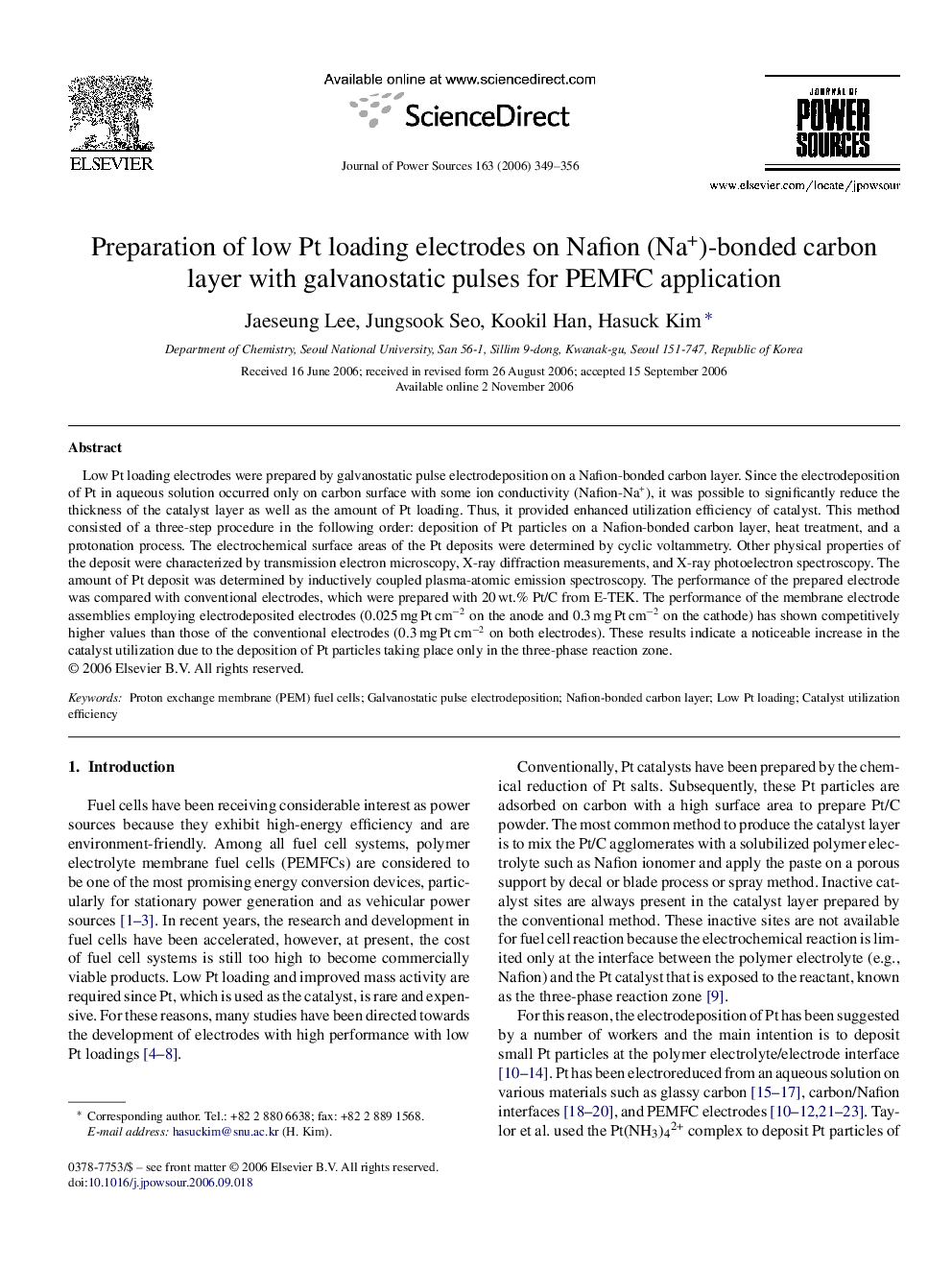| Article ID | Journal | Published Year | Pages | File Type |
|---|---|---|---|---|
| 1291101 | Journal of Power Sources | 2006 | 8 Pages |
Low Pt loading electrodes were prepared by galvanostatic pulse electrodeposition on a Nafion-bonded carbon layer. Since the electrodeposition of Pt in aqueous solution occurred only on carbon surface with some ion conductivity (Nafion-Na+), it was possible to significantly reduce the thickness of the catalyst layer as well as the amount of Pt loading. Thus, it provided enhanced utilization efficiency of catalyst. This method consisted of a three-step procedure in the following order: deposition of Pt particles on a Nafion-bonded carbon layer, heat treatment, and a protonation process. The electrochemical surface areas of the Pt deposits were determined by cyclic voltammetry. Other physical properties of the deposit were characterized by transmission electron microscopy, X-ray diffraction measurements, and X-ray photoelectron spectroscopy. The amount of Pt deposit was determined by inductively coupled plasma-atomic emission spectroscopy. The performance of the prepared electrode was compared with conventional electrodes, which were prepared with 20 wt.% Pt/C from E-TEK. The performance of the membrane electrode assemblies employing electrodeposited electrodes (0.025 mg Pt cm−2 on the anode and 0.3 mg Pt cm−2 on the cathode) has shown competitively higher values than those of the conventional electrodes (0.3 mg Pt cm−2 on both electrodes). These results indicate a noticeable increase in the catalyst utilization due to the deposition of Pt particles taking place only in the three-phase reaction zone.
